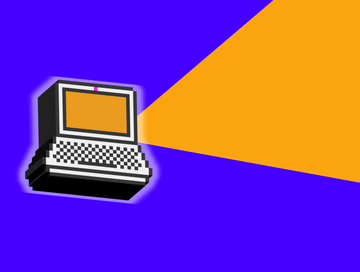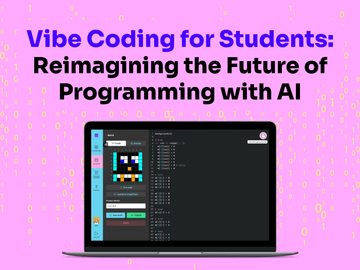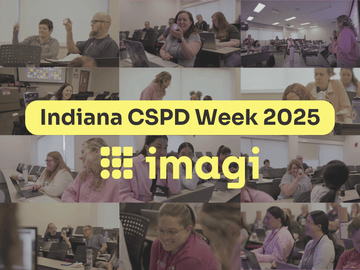
If you're wondering how to introduce Python coding to your students, you’ve come to the right place. Python, with its simple syntax and versatility, provides the perfect gateway to the world of programming. Whether your students are just starting their coding journey or already have some experience under their belts, these are some of the best tools to teach Python coding for kids — from creating games to designing pixel art.
In this article, we've selected 5 tools for use in the classroom and shared the recommended grade levels, taking into account the level of difficulty and prior coding experience required. We’ve also identified some helpful resources these different programs specifically offer teachers.
So, let's dive in and explore some great tools to ignite a passion for Python amongst students!
1. imagi Edu
With a focus on increasing engagement among girls and closing the gender gap in STEM, imagi Edu is designed for educators who want to teach students Python in a creative and accessible way - especially students new to text-based coding.
Recommended grades: Upper Elementary - High School (3rd - 9th Grade)
What it offers: The imagi Edu website is free and easy for teachers to sign-up, create classrooms, and get students coding on the first day. Step-by-step lessons help students learn Python by creating pixel art projects, but the coding environment also allows for students to then apply their skills to code their own designs based on their passions and interests. The imagiCharm, with its customizable LEDs, allows kids to bring their code to life in a tangible way and share projects with their peers. Schools and districts can get full access to 20+ hours of learning content with the imagi Edu Pro license, and teachers can leverage a variety of tutorials, printable resources, and lessons to help them get started by visiting imagi’s educator resources page.
2. Tynker
Tynker is an excellent program for introducing Python to middle school and high school students by empowering kids to build their own games.
Recommended grades: Middle School - High School (7th Grade +)
What it offers: Tynker provides an interactive way to ignite students’ interest in Python by incorporating game-like coding courses and interactive lessons with built-in tutorials that form a fun learning environment. They offer a Python 101 course within their coding curriculum geared towards students with a basic understanding of programming and computational thinking and also offer additional courses in Python for more advanced students.
3. CodeCombat
With CodeCombat, students dive into the world of Python while learning how to type actual code from start to finish.
Recommended grades: Upper Elementary - High School (5th Grade+)
What it offers: This platform seamlessly integrates real Python coding with an immersive gaming experience. Students are encouraged to take on challenges and learn from their mistakes while being guided by built-in hints that nudge them in the right direction. CodeCombat also offers some great teacher resources which include scope and sequences aligned to CSTA standards, pacing guides, and free lesson plans to use along with the program.
4. micro:bit
micro:bit is a great tool for helping students transition to text-based Python coding, especially if they’ve already been using micro:bit in the classroom.
Recommended grades: High School (9th Grade-12th Grade)
What it offers: With the micro:bit Python editor, students can venture into the realm of physical computing while honing their Python skills. It’s free to access and translated into multiple languages, but may be better suited to students who have had some coding instruction before. micro:bit also offers a detailed user guide for their Python editor and a diverse library of projects for inspiration, so that students can solve real-life problems while developing their coding skills.
Kira Learning provides engaging tools, curriculum, and resources that can help educators teach Python coding to high school students.
Recommended grades: High School (9th - 12th Grade)
What it offers: With courses like AI Applications, Fundamentals of Python Coding, and Introduction to Computer Science I (Python), Kira Learning caters to more advanced coding students when it comes to learning Python, equipping them with essential coding skills and fostering computational thinking and real-world problem-solving abilities. A comprehensive LMS provides a multitude of features for computer science teachers to manage classrooms and provide students with support, and Kira Learning's Online IDE or “integrated development environment,” has some special features that even allow for pair programming and AI-assisted feedback.
Now that we introduced you to 5 powerful tools to teach Python coding at school, you can see that there are lots of options that can engage students and meet different learning needs. Teaching kids how to code is a thrilling experience even if it may seem intimidating at the beginning, but we hope these resources will help inspire you to take the first step. If you’re looking to connect with other educators who are also starting out their journey for ideas and support, we’d love to have you join our educator community. We’re in this together!




